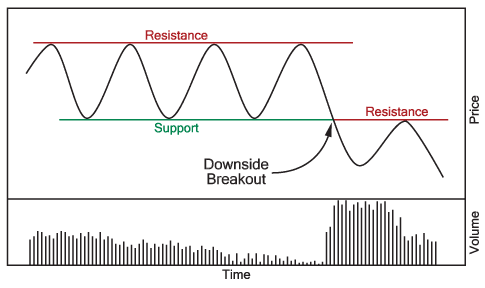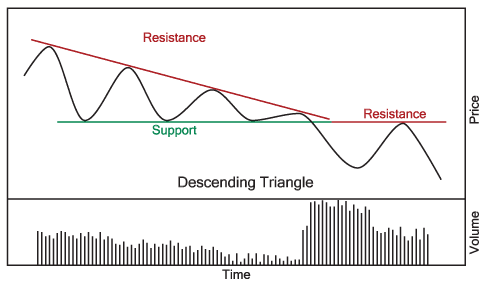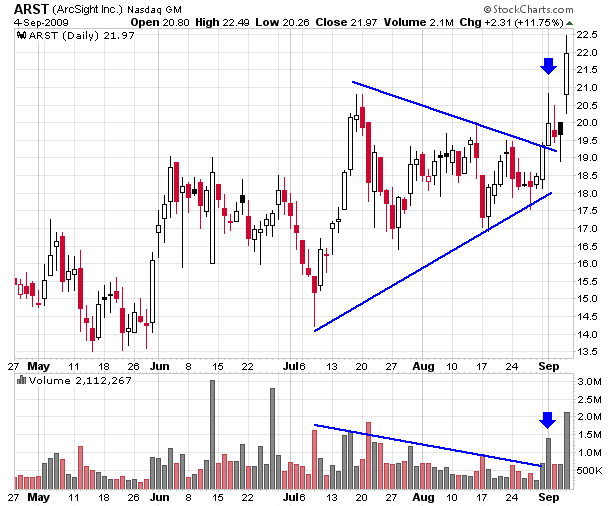When identifying potential price patterns on a chart, it is crucial to try and verify that the market psychology behind the price pattern is really happening at that point on the chart. One of the best ways to do that is to use volume to confirm things.

In the case of a rectangle pattern, volume should be decreasing while the rectangle is forming. There may be volume spikes whenever prices get near the top or bottom of the pattern, but in general, as a rectangle pattern continues to develop, volume should decrease. Volume will probably spike up heavily immediately after the breakout as people realize that the support or resistance line has been broken.

Triangle patterns should have a similar volume pattern - decreasing volume while the triangle is forming with a sharp increase in volume once a breakout is achieved.
Again, the diagrams above are idealized - the real-world is much messier. Consider this example:

Notice that ARST didn't have a smooth decrease in volume but instead had several mini-spikes that corresponded to each change in direction of the �coil.� The key, however, is that each mini-spike was smaller than the previous one (with the exception of July 21, but that was early in the coil's formation). Once that downward volume trend was well established, a big spike above that trend line would signal the breakout - just like on September 1.
So far, the two price patterns we've looked at - Rectangles and Triangles - are examples of Consolidation Patterns, also known as Continuation Patterns. They are called that because, in general, after the pattern completes, prices will usually continue whatever trend they were in prior to the pattern forming. In order words, if prices are in an uptrend prior to a rectangle pattern forming, prices will usually resume the uptrend once the rectangle pattern finishes. Basically, consolidation patterns are places where the bulls and the bears have another short-term argument about the stock, but it is a half-hearted one. The bigger picture doesn't really change.
Next, we are going to start looking at Reversal Patterns. These are where the fireworks occur. If consolidation patterns are skirmishes, reversal patterns are the big battles. When reversal patterns start to appear, the current trend is in real danger and lots of people start to pay attention.
Next time, we'll look at the granddaddy of all reversal patterns - the Head and Shoulders reversal.